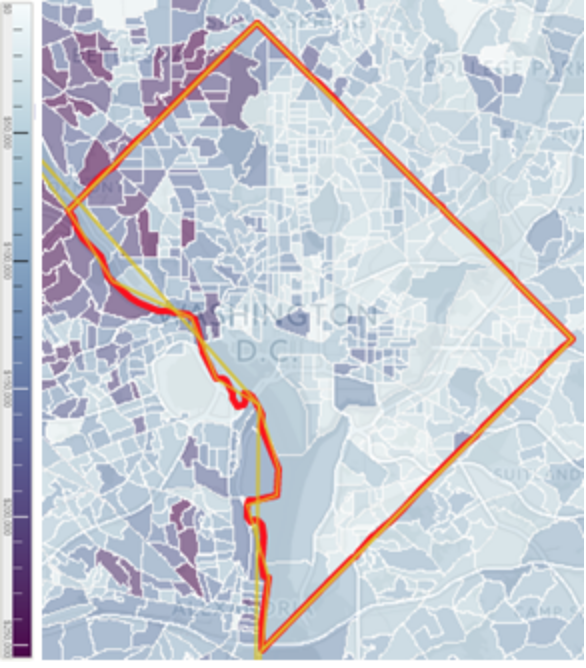
Mar 5, 2018 12:00:00 AM
by Sean Worley
 Yet, even when I consider this policy change as a solution in my current home of Washington, D.C., I’m lost as to whether this would work. The map above illustrates the
current level of income disparity across the District, with darker colors representing higher incomes. The distribution of income is too large to use as attendance boundary criteria, with a clear divide between the upper northwestern region and the rest of the District. D.C. Public Schools (DCPS) tries to remedy this by designating most of their schools as open enrollment, but priority is still given to neighborhood students. Although DCPS should be commended for its strong commitment to equity, there is still much work to be done, especially considering its most recent PARCC scores and the
disparities between racial groups that still exist.
Yet, even when I consider this policy change as a solution in my current home of Washington, D.C., I’m lost as to whether this would work. The map above illustrates the
current level of income disparity across the District, with darker colors representing higher incomes. The distribution of income is too large to use as attendance boundary criteria, with a clear divide between the upper northwestern region and the rest of the District. D.C. Public Schools (DCPS) tries to remedy this by designating most of their schools as open enrollment, but priority is still given to neighborhood students. Although DCPS should be commended for its strong commitment to equity, there is still much work to be done, especially considering its most recent PARCC scores and the
disparities between racial groups that still exist.
Sean Worley has worked in urban education for the last five years as a high school science teacher and instructional coach. He started his career with Teach For America in Sacramento, California, but now serves his community in Washington, D.C. Sean received his master's in education policy from American University.
The story you tell yourself about your own math ability tends to become true. This isn’t some Oprah aphorism about attracting what you want from the universe. Well, I guess it kind of is, but...
If you have a child with disabilities, you’re not alone: According to the latest data, over 7 million American schoolchildren — 14% of all students ages 3-21 — are classified as eligible for special...
The fight for educational equity has never been just about schools. The real North Star for this work is providing opportunities for each child to thrive into adulthood. This means that our advocacy...
Your donations support the voices who challenge decision makers to provide the learning opportunities all children need to thrive.
Ed Post is the flagship website platform of brightbeam, a 501(c3) network of education activists and influencers demanding a better education and a brighter future for every child.
© 2020–2024 brightbeam. All rights reserved.
Leave a Comment